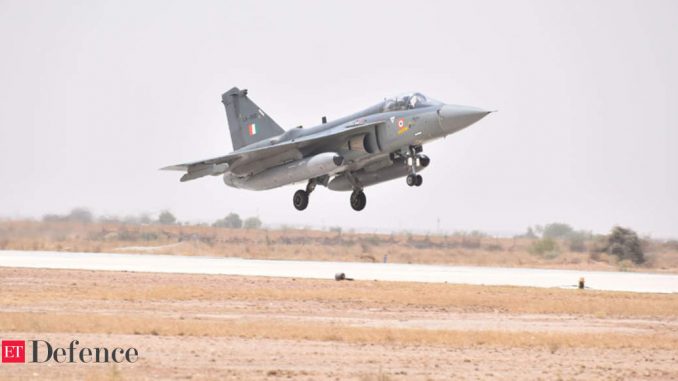
[ad_1]
NEW DELHI: India’s first indigenous air-to-air missile Astra will soon be tested from the first home-grown fighter Tejas, in yet another major step towards making the weapon the mainstay of the country’s combat fleet against hostile jets in the years ahead.
The integration of the Astra beyond visual range air-to-air missile (BVRAAM), which flies over four times the speed of sound at Mach 4.5, on the Tejas and the “initial ground trials” are virtually complete now. “The flight trials of the indigenous missile on the indigenous fighter will begin within the next few months,” said a source on Thursday.
The all-weather day and night capable Astra, which currently has a strike range of around 100-km, will eventually replace the expensive Russian, French and Israeli BVRAAMs that are currently imported to arm IAF fighters.
DRDO also plans to begin testing the Mark-2 version of Astra, with a range of 160-km, in the first half of next year. Plans are concurrently underway for a 350-km range Astra Mark-3 as well, said the sources.
With the sleek Astra Mark-1 already “proven” on the Russian-origin Sukhoi-30MKI fighters, the Rajnath Singh-led Defence Acquisitions Council granted “acceptance of necessity” for an initial order of 288 missiles in July.
“Once the flight trials on Tejas are completed, large-scale orders will follow,” said a source. Defence PSU Bharat Dynamics is slated to produce the missiles in bulk at a unit cost of about Rs 7.5 crore.
This comes at a time when the over Rs 37,000 crore order for 83 Tejas Mark-1A fighter jets from defence PSU Hindustan Aeronautics Ltd is also on the verge of being approved, in what will then be the biggest-ever deal in the indigenous military aviation sector.
Air Chief Marshal R K S Bhadauria last month said the 83-Tejas deal will be inked before the ongoing fiscal ends on March 31. IAF is currently getting deliveries, albeit slowly, of the first 40 Tejas Mark-1 jets under two contracts worth Rs 8,802 crore inked earlier.
India may have developed intercontinental ballistic missiles like the nuclear-capable Agni-V, which can strike targets over 5,000-km away, but the technical struggle to develop Astra has taken 16 long years.
But India has now finally joined the ranks of the US, Russia, France and Israel in developing such complex BVRAAMs capable of detecting, tracking and destroying highly-agile hostile supersonic fighters packed with “counter-measures’’ at long ranges.
DRDO says Astra has “excellent” ECCM (electronic counter-counter measures) to tackle jamming by hostile aircraft, active radar terminal guidance and other features for “high single-shot kill probability” in both “head-on and tail-chase” modes. The IAF, too, has now given it a thumbs-up!
[ad_2]
Source link



Leave a Reply